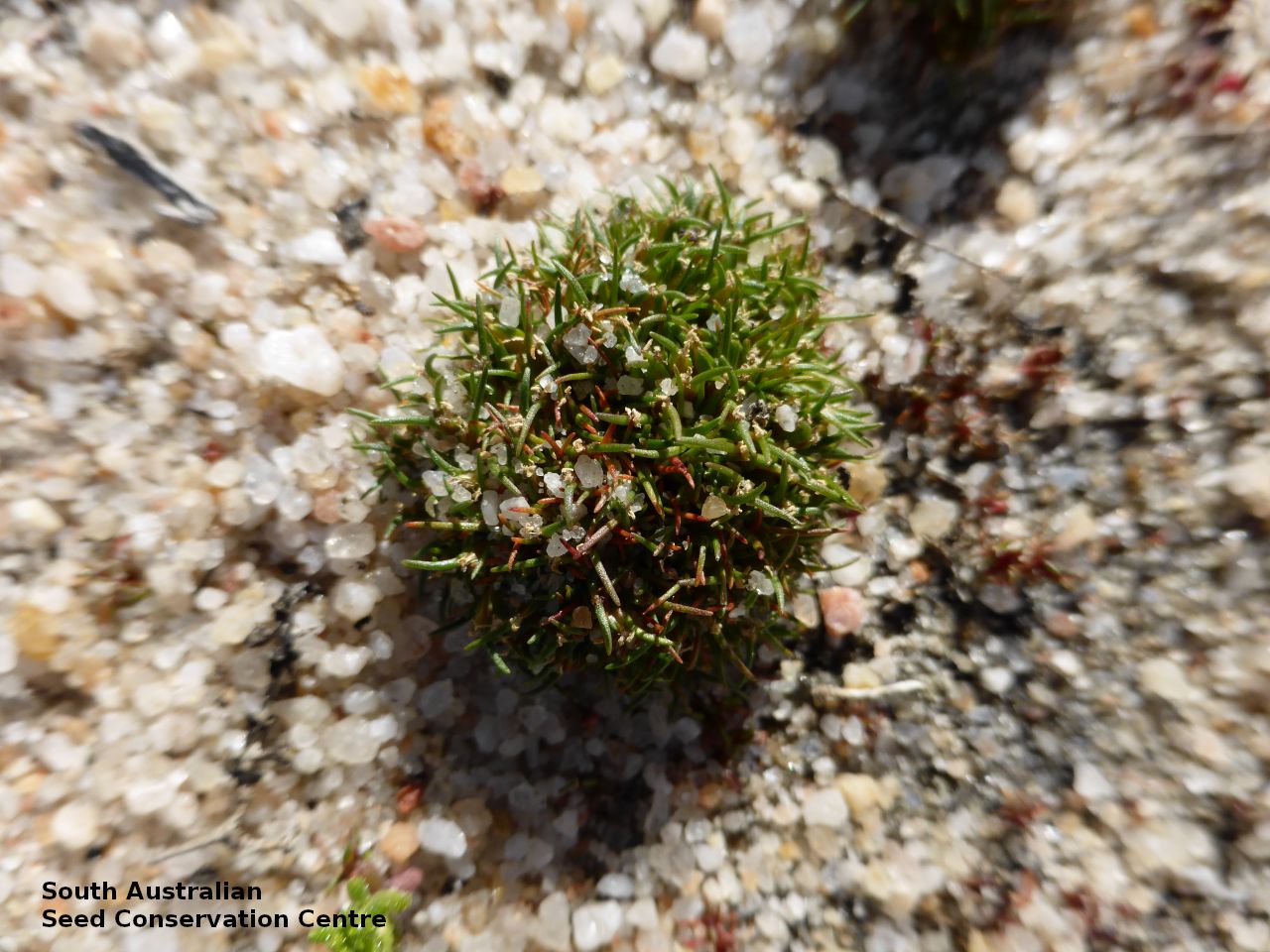
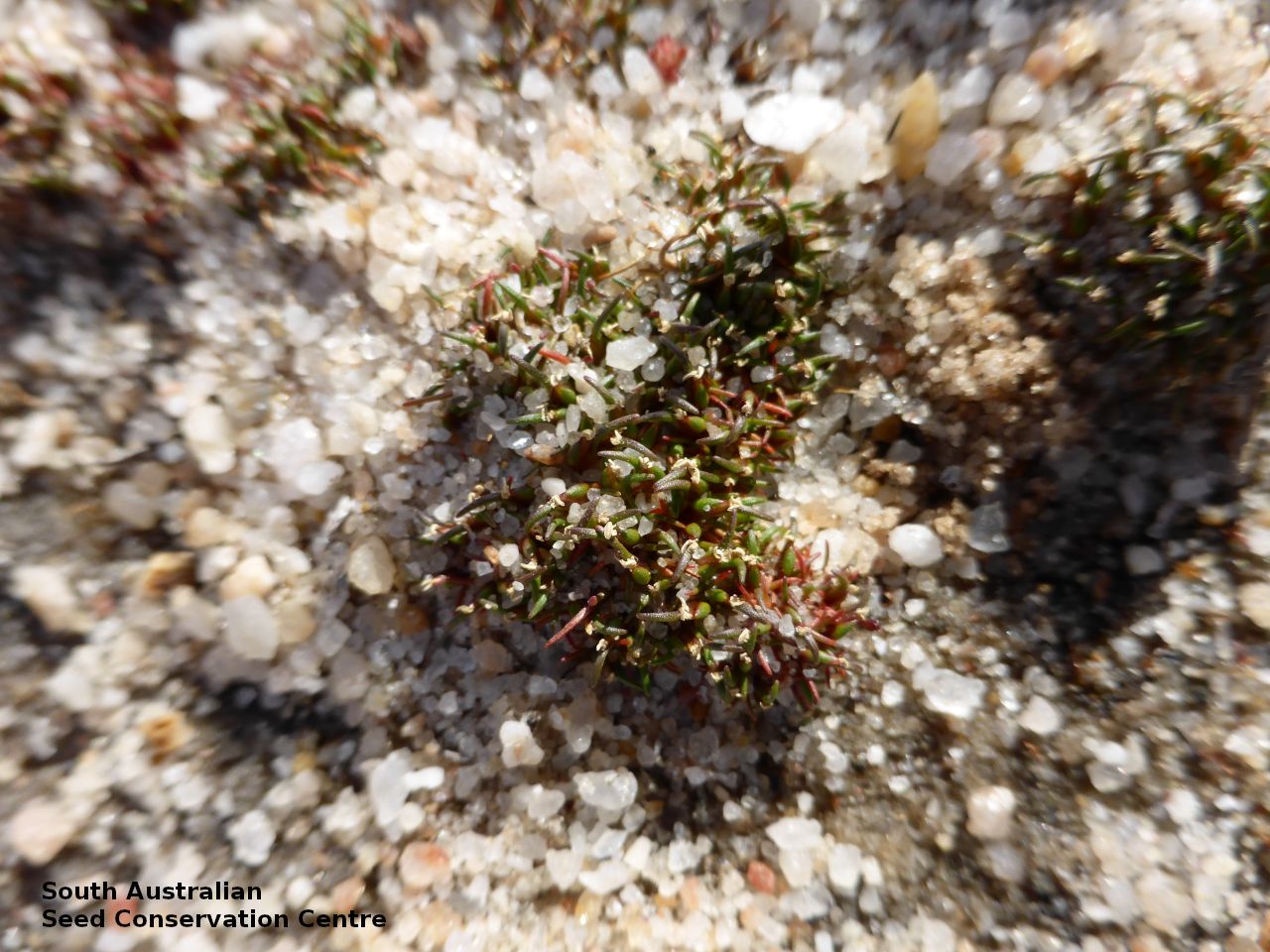
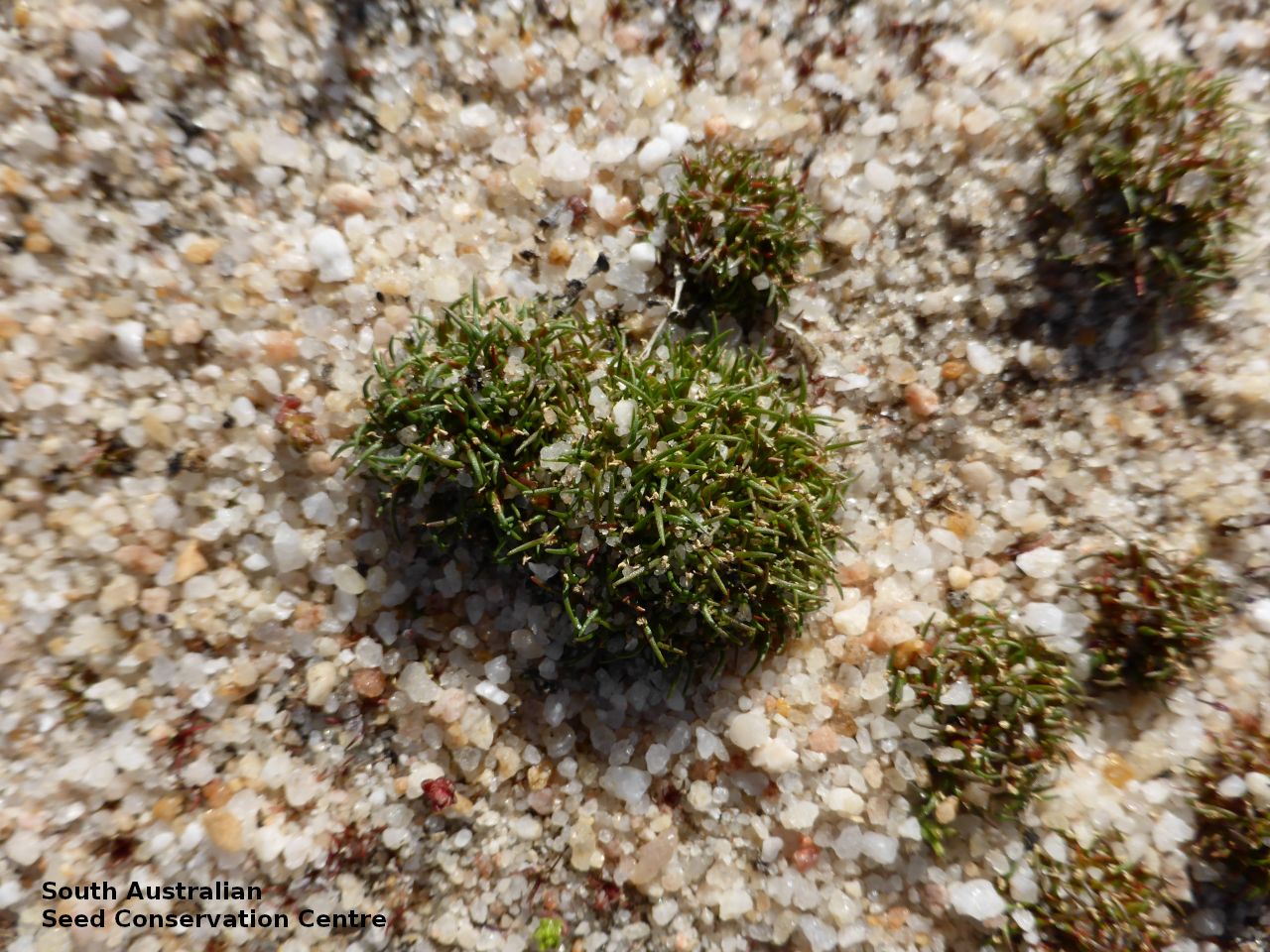
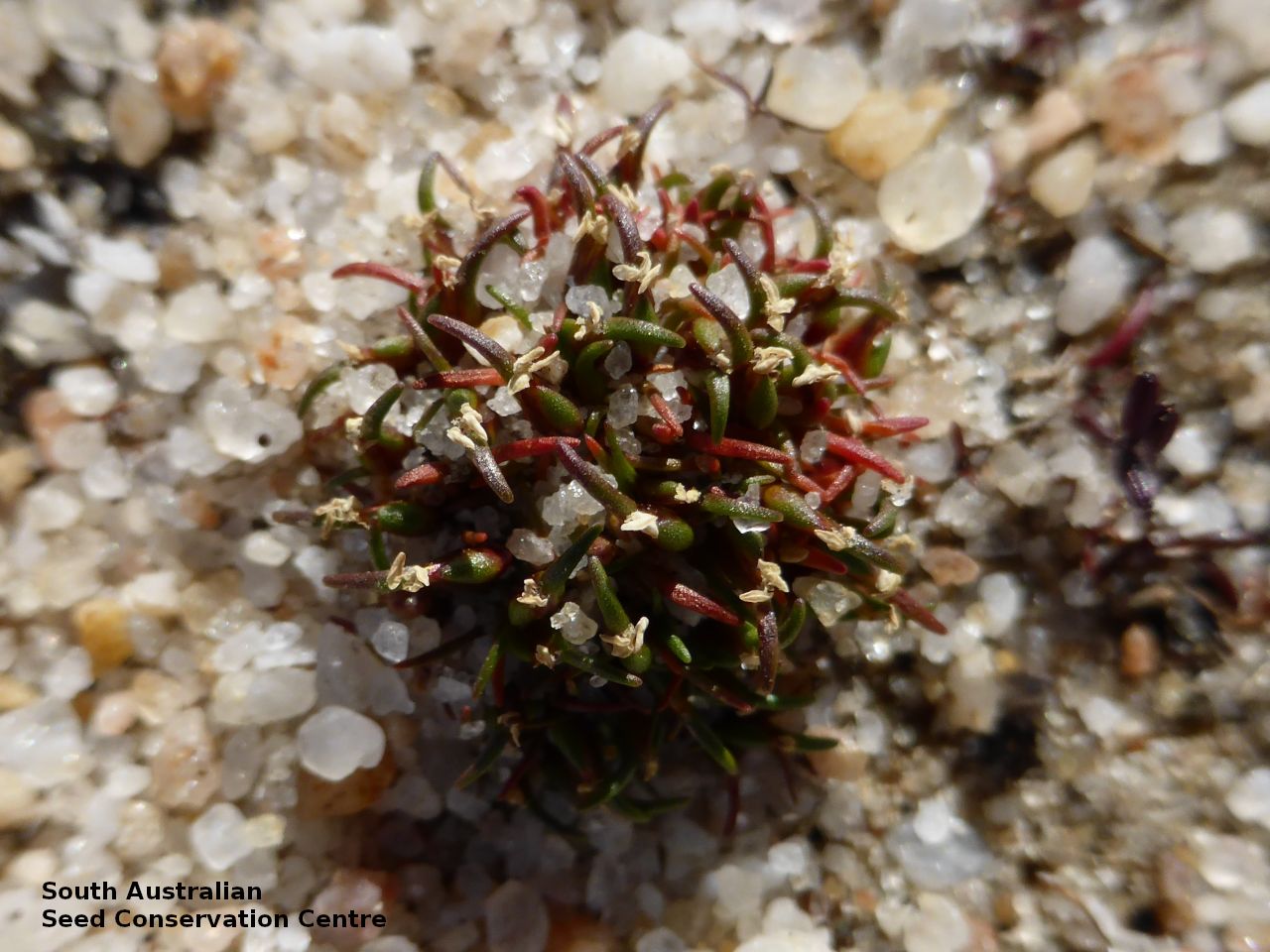
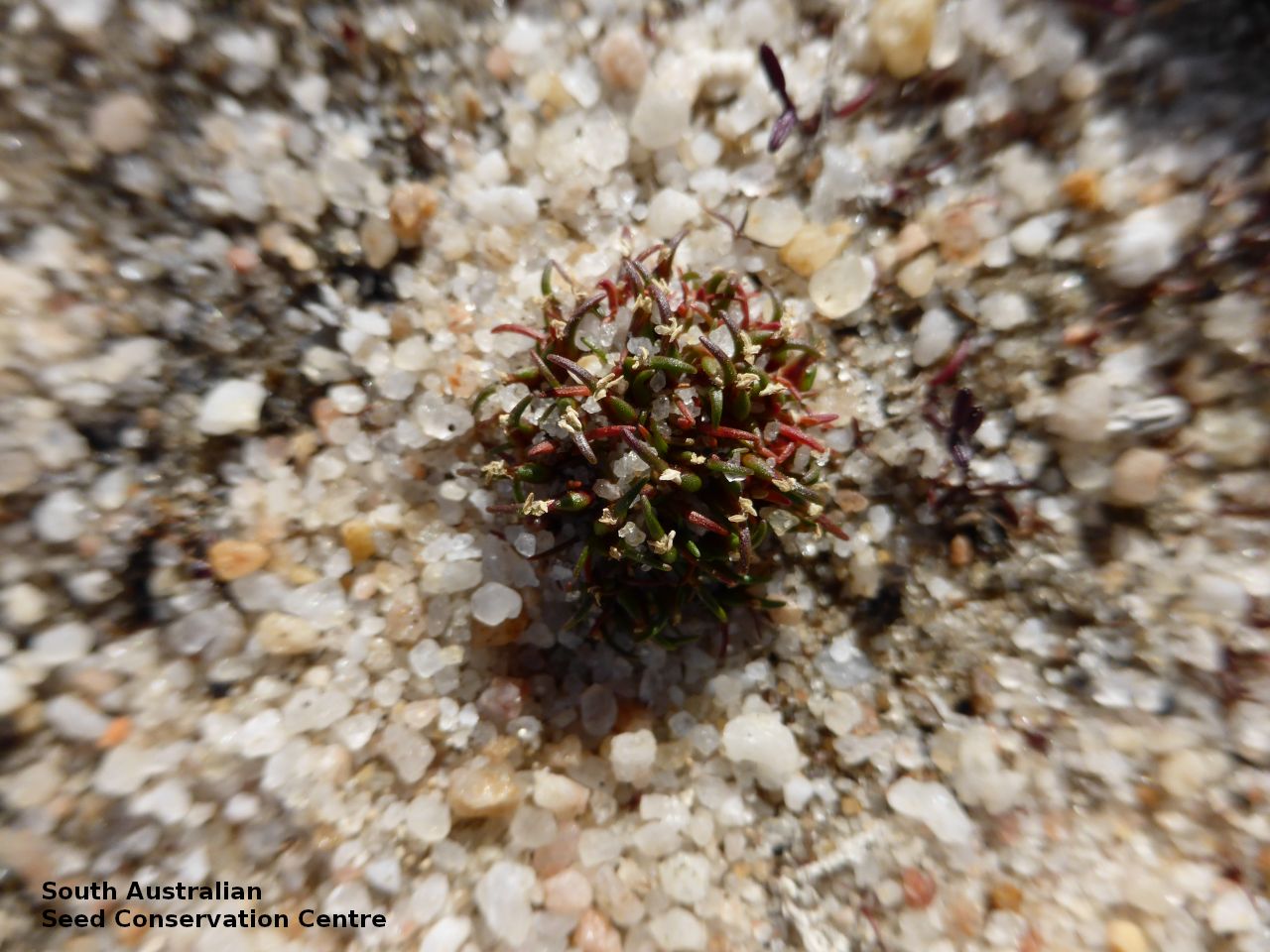
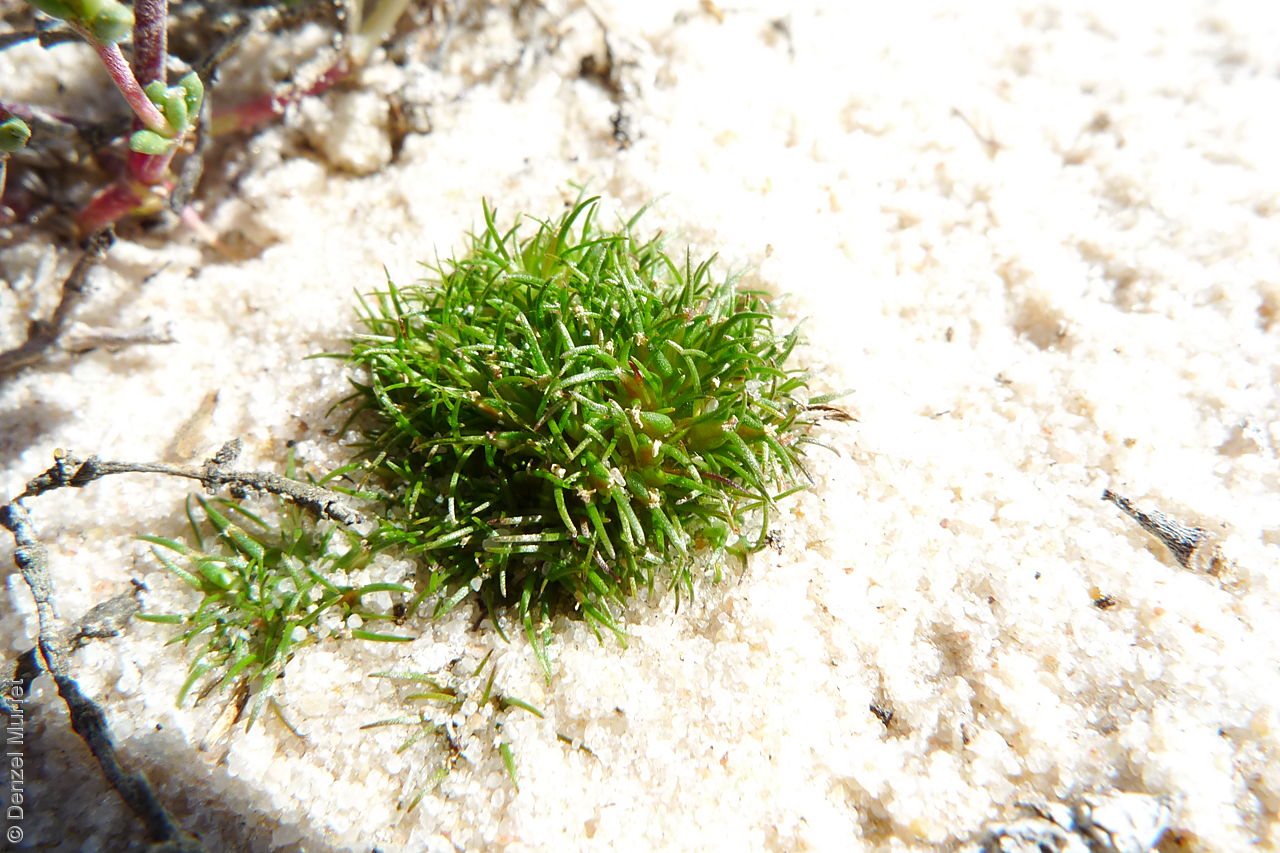
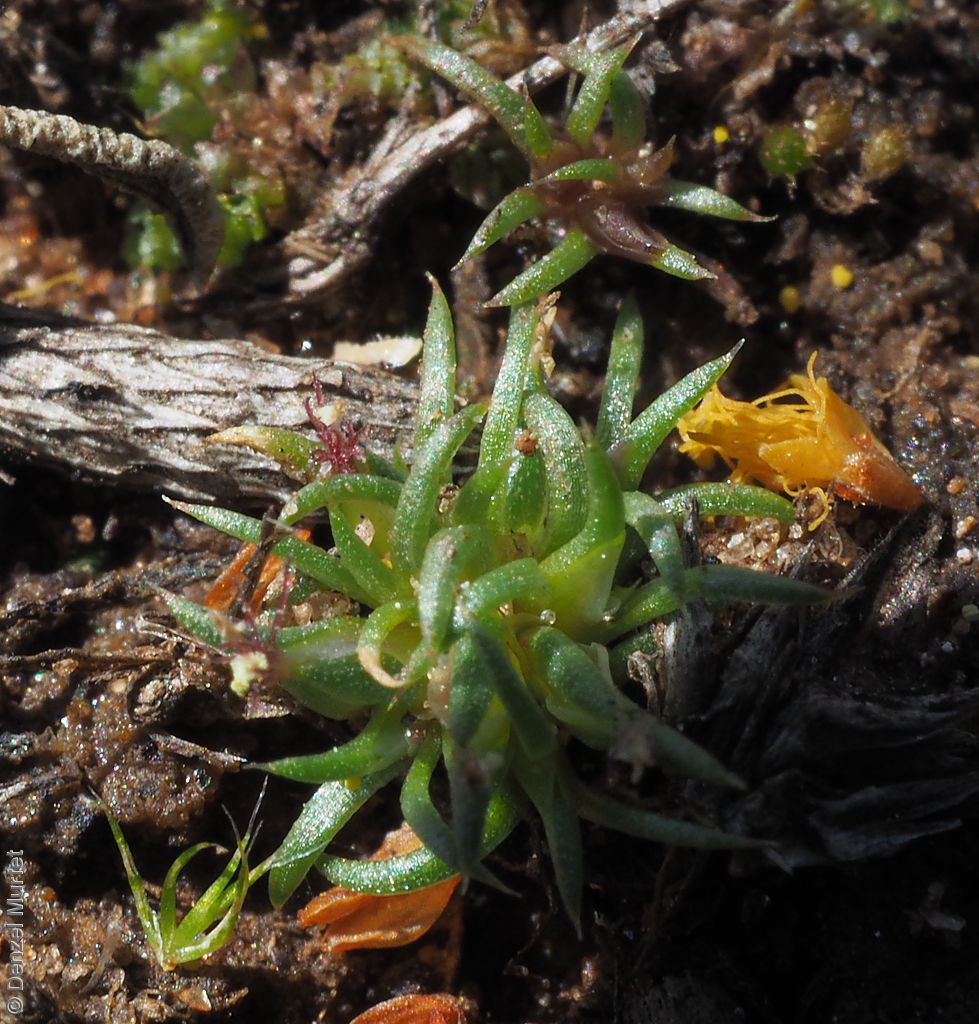
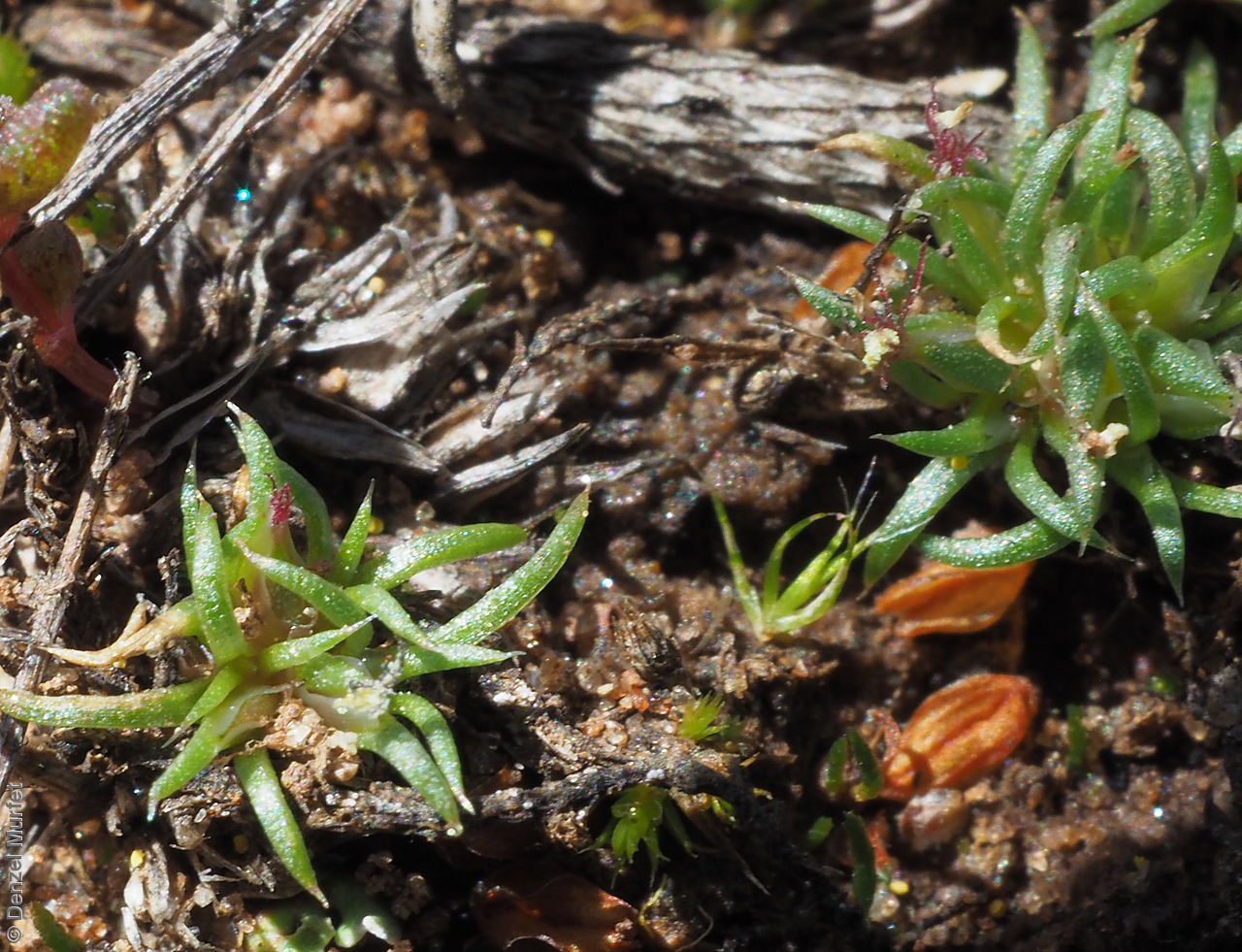
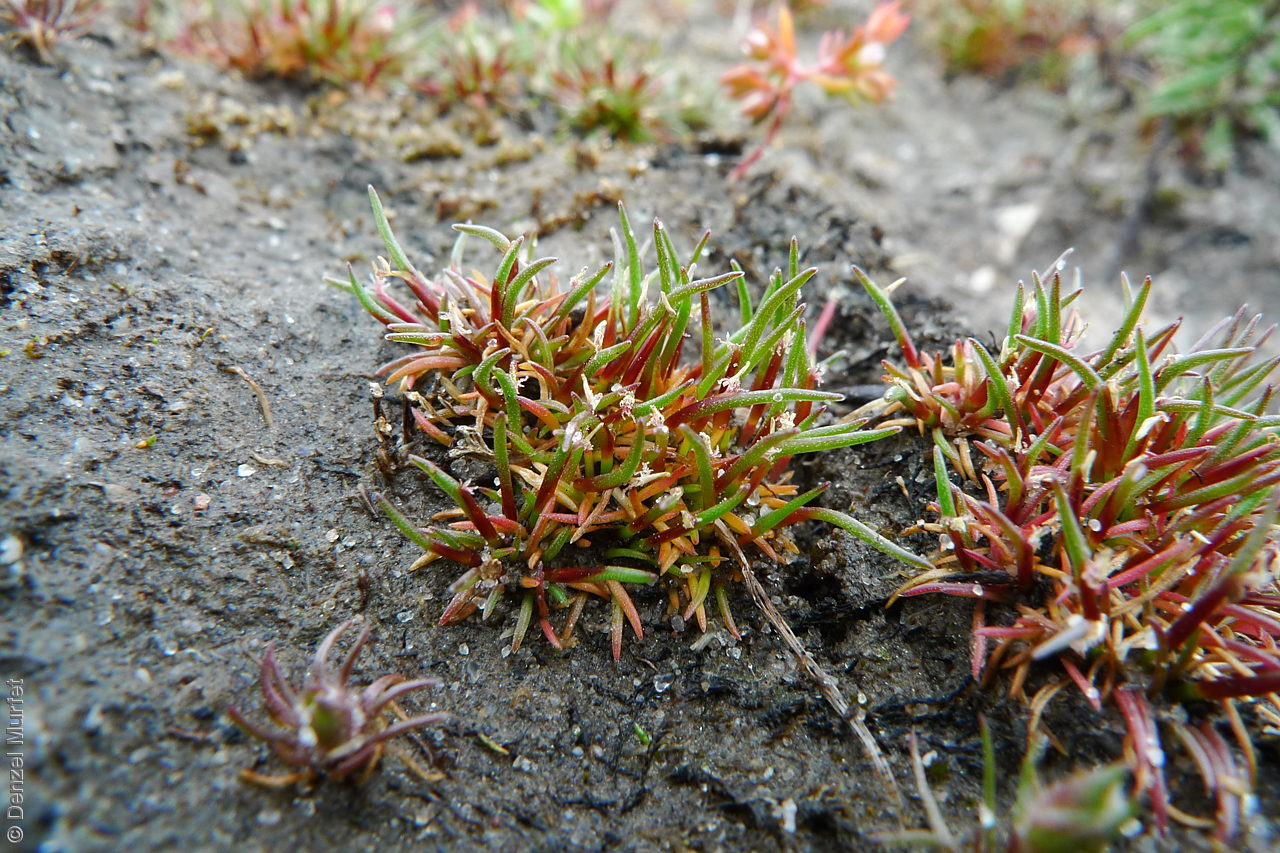
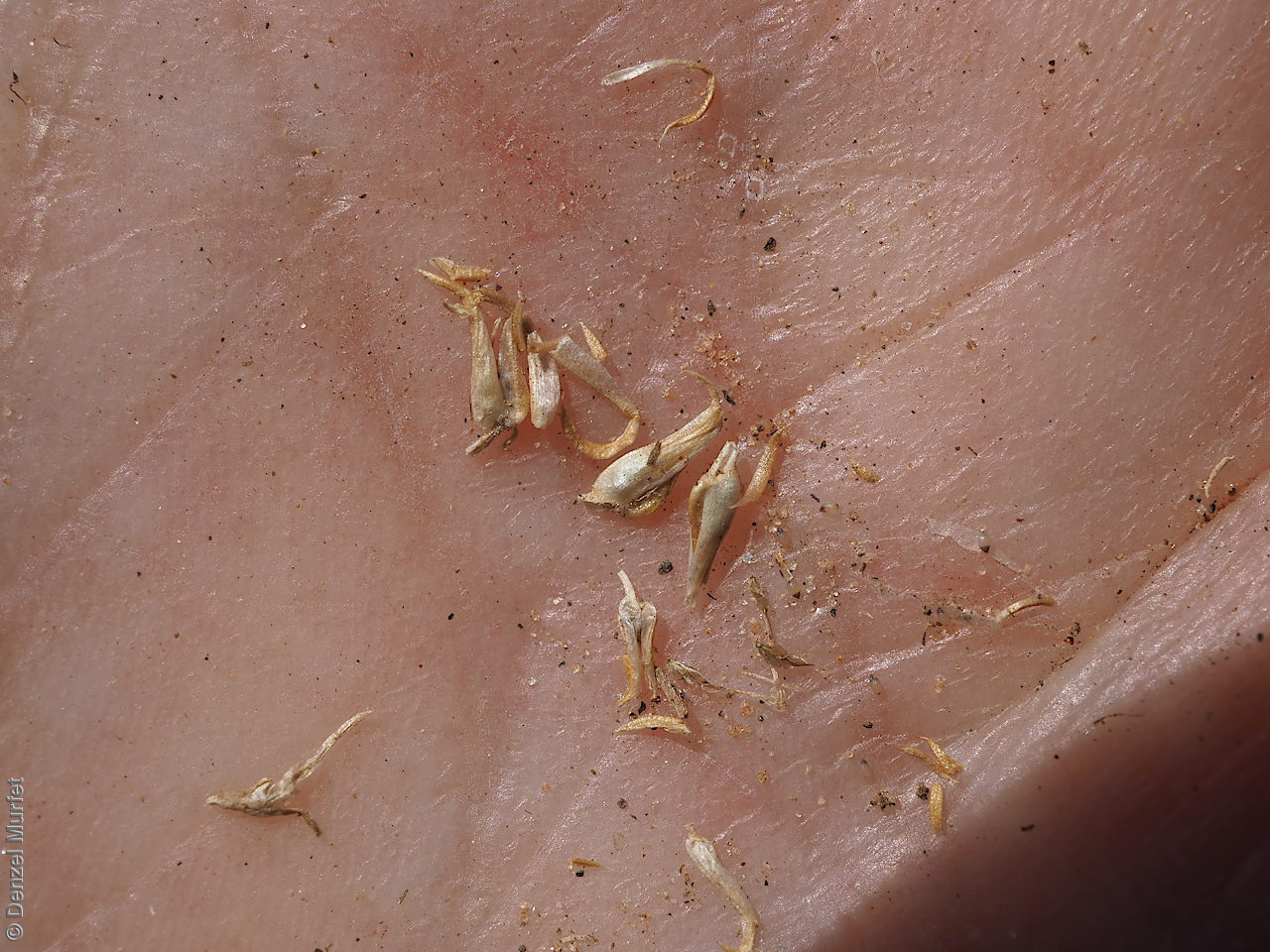


Botanical art
Common names
Dwarf Centrolepis
Cushion Centrolepis
Etymology
Centrolepis from the Greek 'kentron' meaning a spur and 'lepis' meaning scale, referring to the points on the bracts of Centrolepis fascicularis, the type specimen for the genus. Cephaloformis meaning head-shaped.
Distribution and status
Found in the southern part of South Australia, from the Flinders Ranges, Eyre Peninsula to the lower South-east growing in mallee and disturbed communities on sand and other infertile soils, also on the margins of clay pans and salt marshes. Also found in Western Australia and Victoria. Native. Uncommon in South Australia. Uncommon in New South Wales. Common in the other States.
Herbarium regions: Flinders Ranges, Eyre Peninsula, Northern Lofty, Murray, Yorke Peninsula, Southern Lofty, South Eastern, Green Adelaide
AVH map: SA distribution map (external link)
Plant description
Tiny herb forming dense, compact rounded tufts to 25 mm diameter. Leaves to 9 mm long, strongly recurved, innermost one reduced to an obtuse hyaline sheath. Inflorescence subsessile or borne on an axis up to 3 mm long, hence flowers not extended beyond leaves. Lower bract with a broad, pale, papery basal sheath to 3 mm long, abruptly narrowed into a terete recurved lamina. Upper bract to 3 mm long, sheathing at base, broad, pale and papery. Inflorescence units 3 (or rarely 2) per head-like cluster. This subspecies is distinguish from the other species C. cephaloformis ssp. murrayi which have only 1 (very rarely 2) inflorescence units per head-like cluster. Flowering between September and November. Fruit tiny brown head. Seed embryo type is broad.
Seed collection and propagation
Collect seeds between November and December. Collect whole plant that are starting to dry off and turning pale straw colour by picking then off with your fingers. Place the plants in a tray for 1-2 week to dry. Then rub the heads with your hands or a rubber bung to dislodge the seeds. Pass the material through a sieve to separate the unwanted material. The finer material will contain both seeds (soft) and frass (hard) usually distinguishable from each other. With finer sieves, the seeds can be separated from the frass but this is not essential for storage or propagation. Store the seeds with a desiccant such as dried silica beads or dry rice, in an air tight container in a cool and dry place.